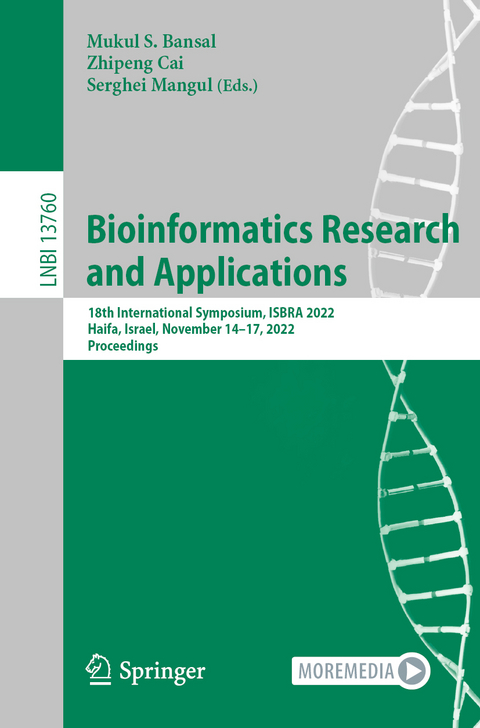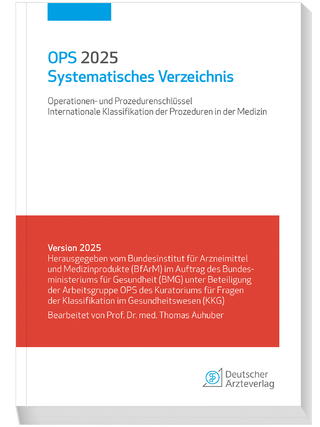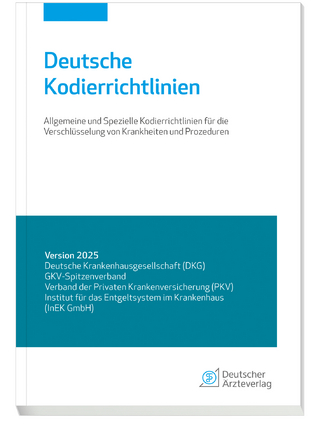
Bioinformatics Research and Applications
Springer International Publishing (Verlag)
978-3-031-23197-1 (ISBN)
The 30 full papers and 4 short papers presented in this book were carefully reviewed and selected from 72 submissions. Biomedical data;
This book constitutes the proceedings of the 18th International Symposium on Bioinformatics Research and Applications, ISBRA 2022, held in Haifa, Israel, in November 14-17, 2022.
The 30 full papers and 4 short papers presented in this book were carefully reviewed and selected from 72 submissions. They were organized in topical sections named: AI and disease; computational proteomics; biomedical imaging; drug screening and drug-drug interaction prediction; Biomedical data; sequencing data analysis.
MLMVFE: A Machine Learning Approach Based on Muli-View Features Extraction for Drug-Disease Associations Prediction.- STgcor: A Distribution-based Correlation MeasurementMethod for Spatial Transcriptome Data.- Automatic ICD Coding based on Multi-granularity Feature Fusion.- Effectively Training MRI Reconstruction Network via Sequentially Using Undersampled k-Space Data with Very Low Frequency Gaps.- Fusing Label Relations for Chinese EMR Named Entity Recognition with Machine Reading Comprehension.- Private Epigenetic PaceMaker Detector using Homomorphic Encryption - Extended Abstract.- NIDN: Medical Code Assignment via Note-Code Interaction Denoising Network.- Research on the prediction method of disease classification based on imaging features.- M-US-EMRs: A Multi-Modal Data Fusion Method of Ultrasonic Images and Electronic Medical Records Used for Screening of Coronary Heart Disease.- Transposition Distance Considering Intergenic Regions for Unbalanced Genomes.- An SMT-based Framework for Reasoning about Discrete Biological Models.- ARGLRR: An Adjusted Random Walk Graph Regularization Sparse Low-rank Representation Method for Single-cell RNA-sequencing Data Clustering.- An Efficient and User-friendly Software for PCR Primer Design for Detection of Highly Variable Bacteria.- A Network-Based Voting Method for Identification and Prioritization of Personalized Cancer Driver Genes.- TDCOSR: A multimodality fusion framework for association analysis between genes and ROIs of Alzheimer's disease.- Policy-based Hypertension Monitoring using Formal Runtime Verification Monitors.- Deep learning-enhanced MHC-II presentation prediction and peptidome deconvolution.- MMLN: Leveraging Domain Knowledge for Multimodal Diagnosis.- Optimal sequence alignment to ED-strings.- Heterogeneous PPInetwork representation learning for protein complex identification.- A Clonal Evolution Simulator for Planning Somatic Evolution Studies.- Prediction of Drug-disease Relationship on Heterogeneous Networks Based on Graph Convolution.- t-SNE Highlights Phylogenetic and Temporal Patterns of SARS-CoV-2 Spike and Nucleocapsid Protein Evolution.- MPCDDI: A Secure Multiparty Computation-based Deep Learning Framework for Drug-drug Interaction Predictions.- A Multimodal Data Fusion-based Deep Learning Approach for Drug-Drug Interaction Prediction.- GNN-Dom: an unsupervised method for protein domain partition via protein contact map.- A Locality-Constrained Linear Coding-Based Ensemble Learning Framework for Predicting Potentially Disease-Associated MiRNAs.- Gaussian-enhanced Representation Model for Extracting Protein-Protein Interactions Affected by Mutations.- Distance Profiles of Optimal RNA Foldings.- 2D Photogrammetry Image of Adolescent Idiopathic Scoliosis Screening Using Deep Learning.- EMRShareChain: A Privacy-Preserving EMR Sharing System Model Based on the Consortium Blockchain.- Simulating Spiking Neural Networks based on SW26010pro.- Entropy Based Clustering of Viral Sequences.- A Tensor Robust Model Based on Enhanced Tensor Nuclear Norm and Low-Rank Constraint for Multi-view Cancer Genomics Data.
| Erscheinungsdatum | 05.01.2023 |
|---|---|
| Reihe/Serie | Lecture Notes in Bioinformatics | Lecture Notes in Computer Science |
| Zusatzinfo | XIV, 390 p. 126 illus., 108 illus. in color. |
| Verlagsort | Cham |
| Sprache | englisch |
| Maße | 155 x 235 mm |
| Gewicht | 573 g |
| Themenwelt | Informatik ► Weitere Themen ► Bioinformatik |
| Naturwissenschaften ► Biologie ► Genetik / Molekularbiologie | |
| Schlagworte | Artificial Intelligence • Bioinformatics • Communication Systems • Computer Networks • Computer systems • computer vision • Databases • Data Mining • Image Analysis • Image Processing • Internet • learning • machine learning • Mathematics • Network Protocols • Neural networks • Signal Processing • Signal to Noise Ratio • Software engineering • Telecommunication Systems • wireless telecommunication systems |
| ISBN-10 | 3-031-23197-X / 303123197X |
| ISBN-13 | 978-3-031-23197-1 / 9783031231971 |
| Zustand | Neuware |
| Informationen gemäß Produktsicherheitsverordnung (GPSR) | |
| Haben Sie eine Frage zum Produkt? |
aus dem Bereich


